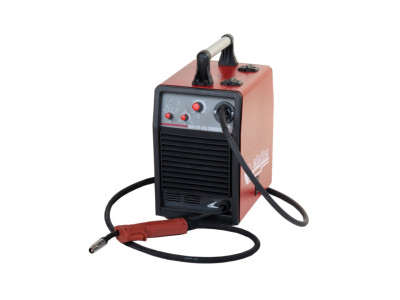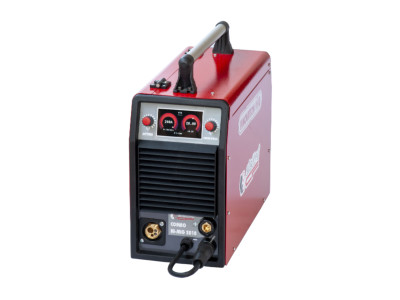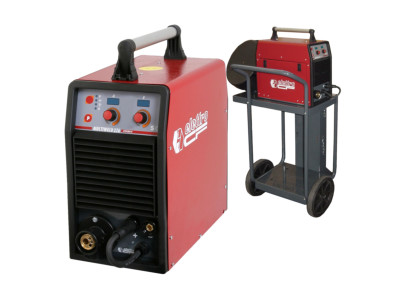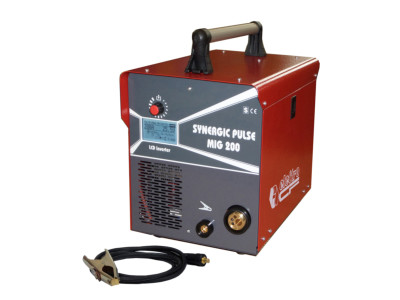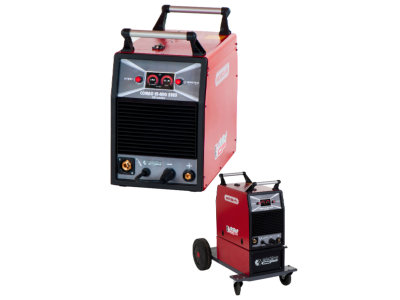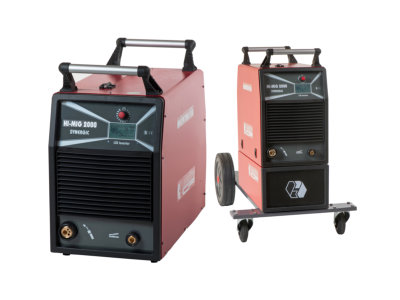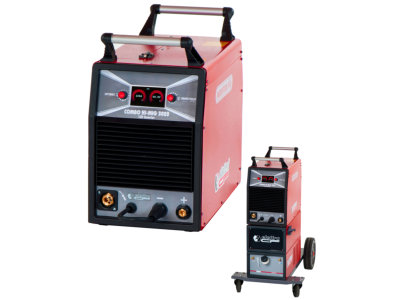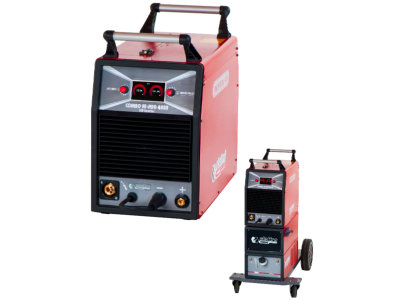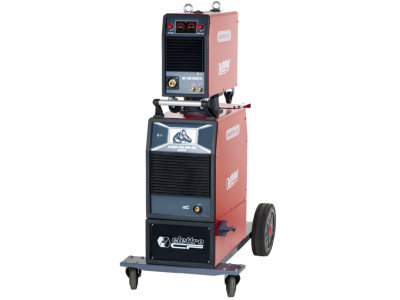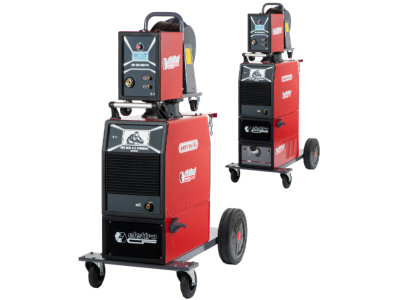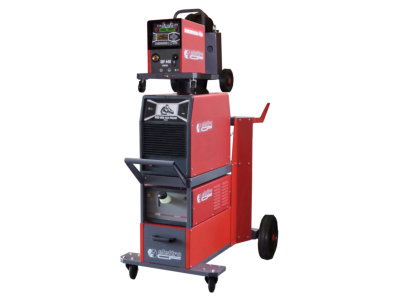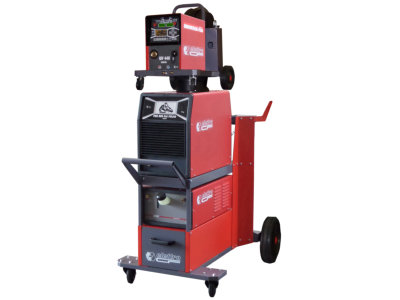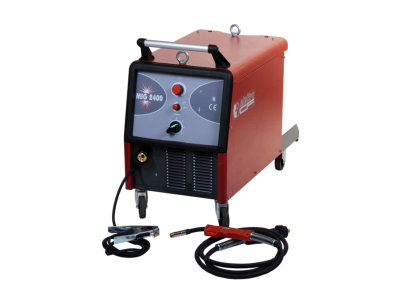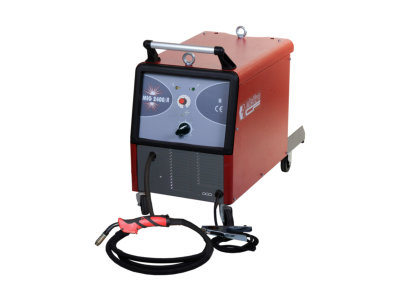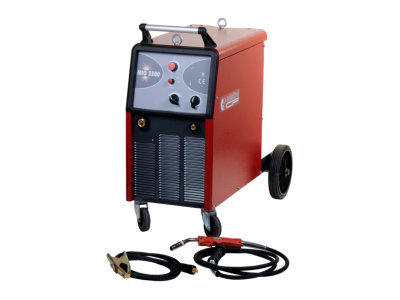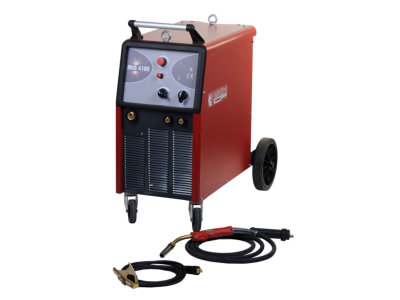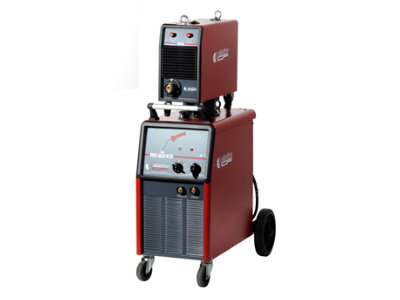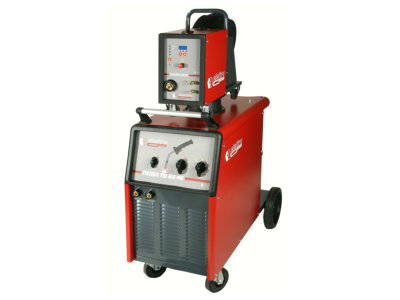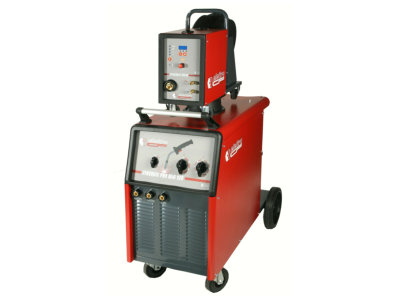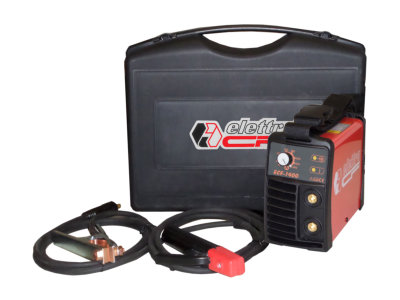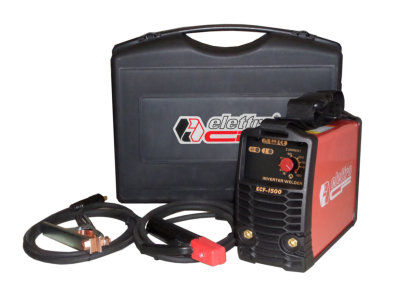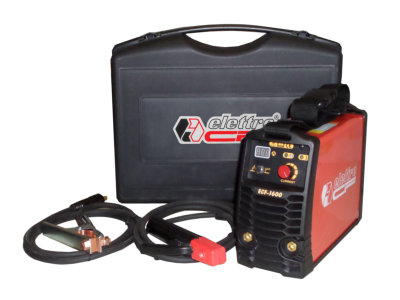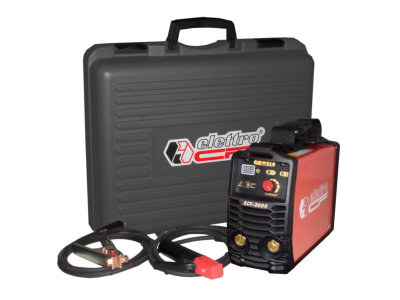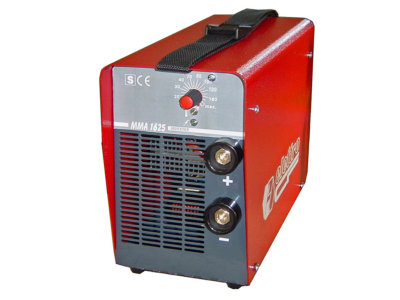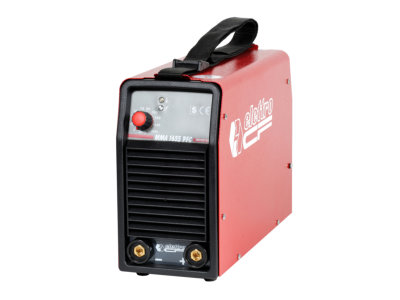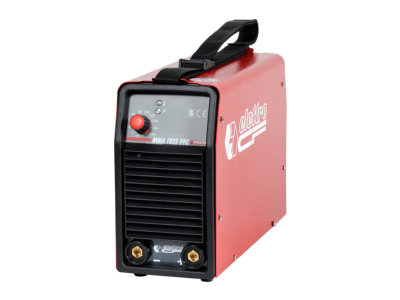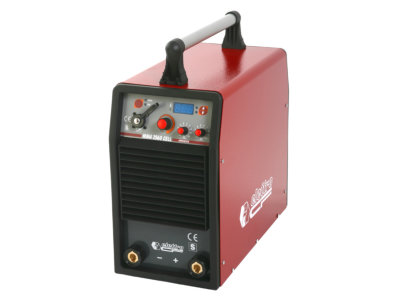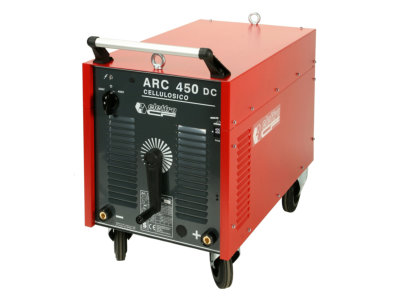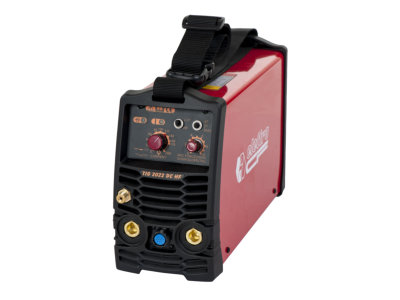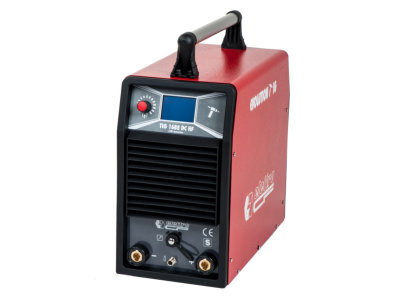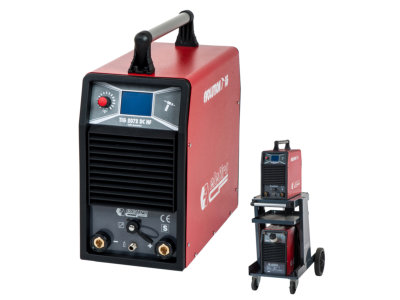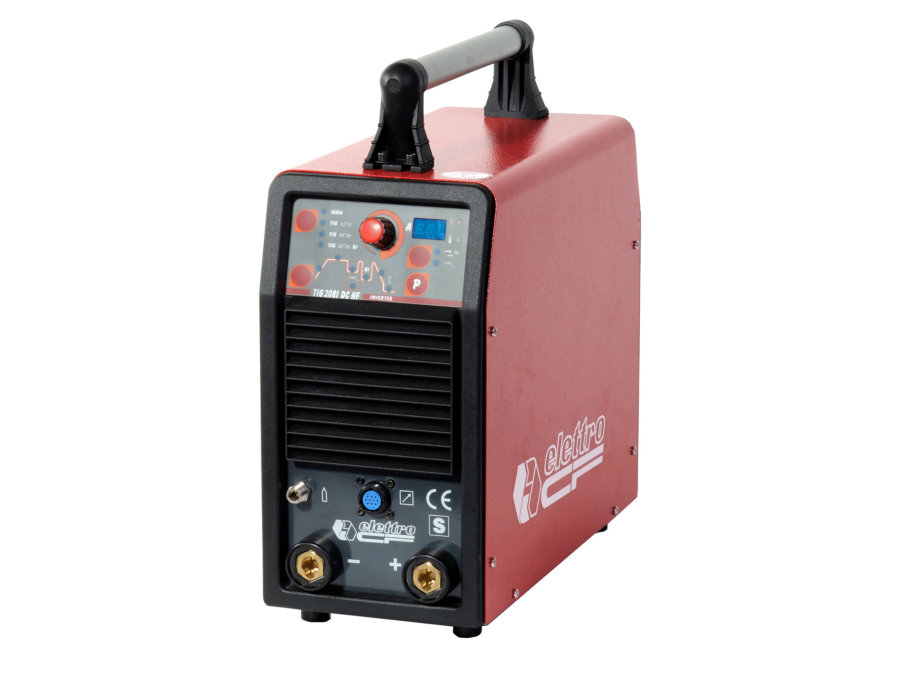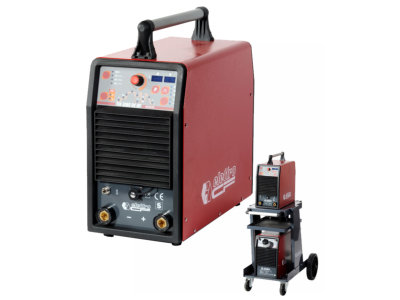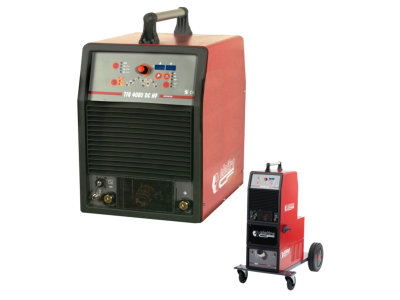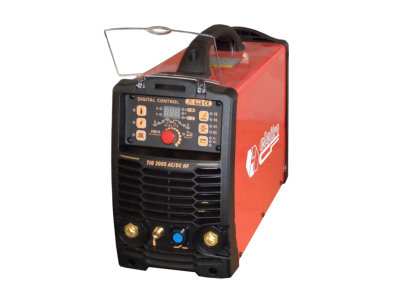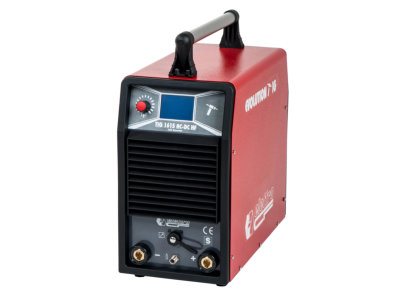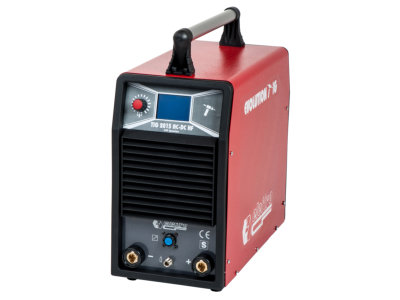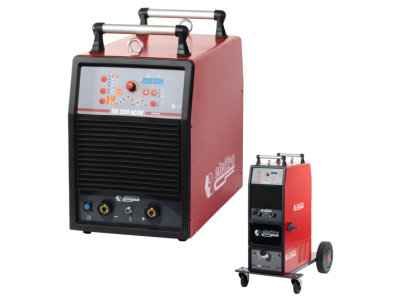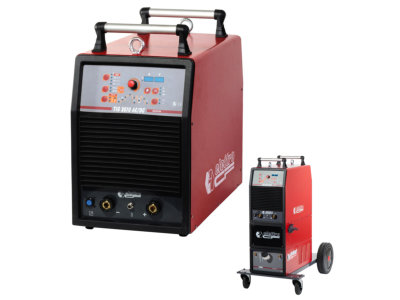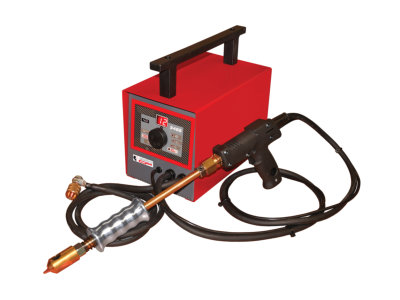- - MIG-MAG wire welding machines with inverter or jerk technology
- - MMA welding machines with inverter or transformer technology
- - TIG welding machines with DC or AC / DC technology
- - Resistance welders
Welding machines Elettro CF
Welding machines
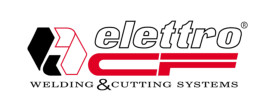
Sales and assistance:
Welding machines MIG/MAG inverter
Metal inert gas (MIG) welding or metal active gas (MAG) welding, known according to the AWS terminology as Gas metal arc welding (GMAW), is a welding process in which an electric arc is formed between a consumable wire electrode and the workpiece metal, which heats the workpiece metal, causing them to melt, and join. Along with the wire electrode, a shielding gas is fed through the welding torch, which shields the process from contaminants in the air. The fact that it’s a continuous wire welding process grants a high productivity and, at the same time, the presence of gas allows operation without slag (both these features make this procedure more advantageous in comparison with MMA welding).
Today, GMAW is the most common industrial welding process, preferred for its versatility, speed and the relative ease of adapting the process to robotic automation. Unlike welding processes that do not employ a shielding gas, such as shielded metal arc welding, it is rarely used outdoors or in other areas of air volatility. Some welding machines include the use of a related process, flux cored arc welding, that often does not utilize a shielding gas, instead employing a hollow electrode wire that is filled with flux on the inside.
To perform gas metal arc welding, the basic necessary equipment is:
1. Welding power source.
2. Welding gun with a dual function: to start the electric arc between the wire and the workpiece and to fed the shielding gas
3. Wire feed unit.
4. Welding wire.
5. Ground clamp.
6. Shielding gas supply.
MMA welding machines
Shielded metal arc welding (SMAW), also known as manual metal arc (MMA) welding, flux shielded arc welding or informally as stick welding, is a manual arc welding process that uses a consumable electrode coated in flux to lay the weld. It’s the process more suitable for outdoor use (and then on site) since it does not require the shielding gas. An electric current, in the form of either alternating current or direct current from a welding power source, is used to form an electric arc between the electrode and the metals to be joined. As the weld is laid, the flux coating of the electrode disintegrates, giving off vapours that serve as a shielding gas and providing a layer of slag, both of which protect the weld area from atmospheric contamination as it solidifies. Once hardened, it must be chipped away to reveal the finished weld. As welding progresses and the electrode melts, the welder must periodically stop welding to remove the remaining electrode stub and insert a new electrode into the electrode holder. This activity, combined with chipping away the slag, reduce the amount of time that the welder can spend laying the weld, making SMAW one of the least efficient welding processes. Because of its versatility and simplicity shielded metal arc welding is one of the world's most popular welding processes, it is particularly dominant in the maintenance and repair industry, and is heavily used in the construction of steel structures and in industrial fabrication. In recent years its use has declined in favour of other types of welding. However, because of the low equipment cost and wide applicability, the process will likely remain popular, especially among amateurs and small businesses. The choice of electrode for SMAW is wide and depends on a number of factors, including the weld material, welding position and the desired weld properties. MMA welding equipment typically consists of a welding power source, electrodes, an electrode holder, a ground clamp and welding cables.
TIG welding machines
Gas tungsten arc welding (GTAW), also known as tungsten inert gas (TIG) welding, is an arc welding process that, to produce the weld, uses a non consumable tungsten electrode, a shielding gas and can be realized with or without filler metal. The weld area is protected from atmospheric contamination by a shielding gas (usually an inert gas such as argon), and a filler metal is normally used, though some welds, known as autogenous welds, do not require it. GTAW is most commonly used to weld thin sections of stainless steel and non-ferrous metals such as aluminum, magnesium, and copper alloys. The process grants the operator greater control over the weld than competing processes such as shielded metal arc welding and gas metal arc welding, allowing for stronger, higher quality welds. However, GTAW is comparatively more complex and difficult to master, and furthermore, it is significantly slower than most other welding techniques. To strike the welding arc, a high frequency power source provides an electric spark; this spark is a conductive path for the welding current through the shielding gas and allows the arc to be initiated. Once the arc is struck, the welder moves the torch in a small circle to create a welding pool, the size of which depends on the size of the electrode and the amount of current. While maintaining a constant separation between the electrode and the workpiece, the operator then moves the torch slightly and tilts it backward about 10–15 degrees from vertical. He must avoid that the electrode comes into direct contact with the workpiece, otherwise the tungsten electrode "sticks" to the joint and the welding is interrupted. Filler metal is added manually to the front end of the weld pool as it is needed The equipment required for the gas tungsten arc welding operation includes a welding power source, a welding torch utilizing a non consumable tungsten electrode, a shielding gas source, a ground clamp and an eventual rod filler metal.
Resistance welders
The resistance welding is a technique used for joining metals by means of an electrical current flow which passes through two pieces of metal creating a heat dissipation between the pieces up to fuse them. This welding technique is frequently used in the automotive field.
MULTIFUNCTION SPOTTER - single-phase
Power source SPOTTER 1800 DIGITAL is a multifunction portable spotter, particularly suitable for repairing steel car bodies, sheet straightening, rivets welding and localised sheets heating with carbon electrode.
The “AUTOSTART” function can be enabled by the operator directly and simplifies the use of the portable spotter, as it allows having the welding process automatically started when the tool gets in touch with the sheet. A built-in microprocessor control unit allows an easy and quick welder’s adjustment. Besides the manual regulation modalities, the machine is provided with 4 memories optimised for the most common works. Moreover, the welding machine offers the possibility of a fine adjustment with a synergic curve. The content of the memories can be customised directly by the user thus suiting one’s needs. The half-period regulation allows a more accurate job.




